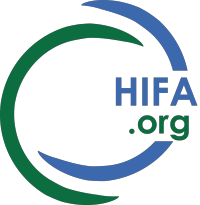Dear CHIFA and HIFA-Zambia colleagues,
Happy new year! Here is an interesting new paper from Zambia. Citation, abstract and a comment from me below.
CITATION: Bridging the gap in neonatal resuscitation in Zambia
Kunda Mutesu-Kapembwa et al.
Front. Pediatr., 05 December 2022
Sec. Neonatology
https://doi.org/10.3389/fped.2022.103823
ABSTRACT: Neonatal resuscitation has been poorly instituted in many parts of Africa and most neonatal resuscitation algorithms are adapted from environments with abundant resources. Helping Babies Breathe (HBB) is an algorithm designed for resourcelimited situations and most other algorithms are designed for resource-rich countries. However, there are neonatal referral centers in resource-limited countries who may provide more advanced resuscitation. Thus, we developed a neonatal resuscitation algorithm for a resource-limited country (Zambia) which considers more advanced interventions in situations where they can be provided. The algorithm described in this paper is based on the Newborn Life Support algorithm from the UK as well as the HBB algorithm and accounts for all situations in a resource-limited country. Most importantly, it focuses on noninvasive ventilation but includes advice on more advanced resuscitation including intravenous access, fluid management, chest compressions and adrenaline for resuscitation. Although intubation skills are included in neonatal training workshops, it is not the main focus of the algorithm as respiratory support equipment is scarce or lacking in most health facilities in Zambia. A home-grown neonatal resuscitation algorithm for a resource-limited country such as Zambia is likely to bridge the gap between limited situations requiring only bag and mask ventilation and better equipped institutions where more advanced resuscitation is possible. This algorithm will be rolled out in all training institutions and delivery facilities across Zambia over the next months.
COMMENT (NPW): The authors conclude: 'The Zambian neonatal resuscitation algorithm is the first algorithm crafted by experts working in Zambia, making it a suitable algorithm for all levels of care in this country. This home-grown neonatal resuscitation algorithm is likely to bridge the gap between limited situations requiring only bag and mask ventilation and better equipped institutions where more advanced resuscitation is possible.' They state that 'The algorithm is currently rolled out across Zambia in order to unify neonatal resuscitation across the country'.
The method of development is interesting: 'This algorithm was designed by people who are familiar with the country's specific needs. The group consists of clinicians from various specialties including anaesthetists, midwives, nurses, paediatricians, and neonatologists who came together for regular meetings to discuss the ideal approach to neonatal resuscitation in Zambia. The final version incorporates ideas from the HBB and the NLS algorithm and was generated in an iterative process through group discussions among the members of this working group.'
I would like to invite comment on the drivers and barriers to the successful development of clinical algorithms for neonatal resuscitation (and other aspects of health care) in low-resource settings.
Join CHIFA (child health and rights): http://www.hifa.org/joinchifa
Join HIFA-Zambia: http://www.hifa.org/join/join-hifa-zambia
Best wishes, Neil
Dr Neil Pakenham-Walsh, HIFA Coordinator
Healthcare Information For All
Global Healthcare Information Network
Working in Official Relations with the World Health Organization
20,000 members, 400 supporting organisations, 180 countries, 6 forums, 4 languages
www.hifa.org neil@hifa.org

